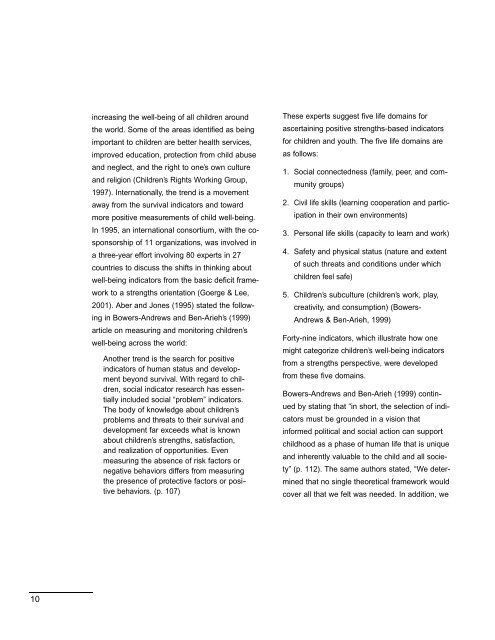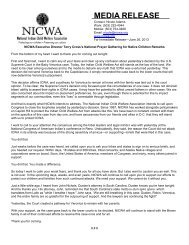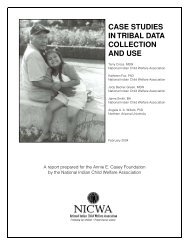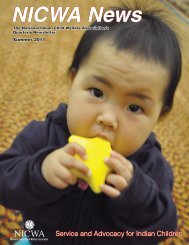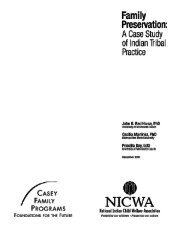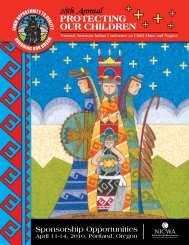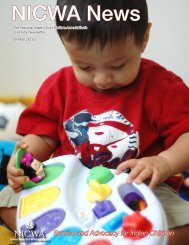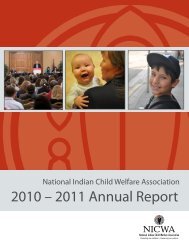Native American Children and Youth Well-Being Indicators
Native American Children and Youth Well-Being Indicators
Native American Children and Youth Well-Being Indicators
Create successful ePaper yourself
Turn your PDF publications into a flip-book with our unique Google optimized e-Paper software.
increasing the well-being of all children aroundthe world. Some of the areas identified as beingimportant to children are better health services,improved education, protection from child abuse<strong>and</strong> neglect, <strong>and</strong> the right to one’s own culture<strong>and</strong> religion (<strong>Children</strong>’s Rights Working Group,1997). Internationally, the trend is a movementaway from the survival indicators <strong>and</strong> towardmore positive measurements of child well-being.In 1995, an international consortium, with the cosponsorshipof 11 organizations, was involved ina three-year effort involving 80 experts in 27countries to discuss the shifts in thinking aboutwell-being indicators from the basic deficit frameworkto a strengths orientation (Goerge & Lee,2001). Aber <strong>and</strong> Jones (1995) stated the followingin Bowers-Andrews <strong>and</strong> Ben-Arieh’s (1999)article on measuring <strong>and</strong> monitoring children’swell-being across the world:Another trend is the search for positiveindicators of human status <strong>and</strong> developmentbeyond survival. With regard to children,social indicator research has essentiallyincluded social “problem” indicators.The body of knowledge about children’sproblems <strong>and</strong> threats to their survival <strong>and</strong>development far exceeds what is knownabout children’s strengths, satisfaction,<strong>and</strong> realization of opportunities. Evenmeasuring the absence of risk factors ornegative behaviors differs from measuringthe presence of protective factors or positivebehaviors. (p. 107)These experts suggest five life domains forascertaining positive strengths-based indicatorsfor children <strong>and</strong> youth. The five life domains areas follows:1. Social connectedness (family, peer, <strong>and</strong> communitygroups)2. Civil life skills (learning cooperation <strong>and</strong> participationin their own environments)3. Personal life skills (capacity to learn <strong>and</strong> work)4. Safety <strong>and</strong> physical status (nature <strong>and</strong> extentof such threats <strong>and</strong> conditions under whichchildren feel safe)5. <strong>Children</strong>’s subculture (children’s work, play,creativity, <strong>and</strong> consumption) (Bowers-Andrews & Ben-Arieh, 1999)Forty-nine indicators, which illustrate how onemight categorize children’s well-being indicatorsfrom a strengths perspective, were developedfrom these five domains.Bowers-Andrews <strong>and</strong> Ben-Arieh (1999) continuedby stating that “in short, the selection of indicatorsmust be grounded in a vision thatinformed political <strong>and</strong> social action can supportchildhood as a phase of human life that is unique<strong>and</strong> inherently valuable to the child <strong>and</strong> all society”(p. 112). The same authors stated, “We determinedthat no single theoretical framework wouldcover all that we felt was needed. In addition, we10


